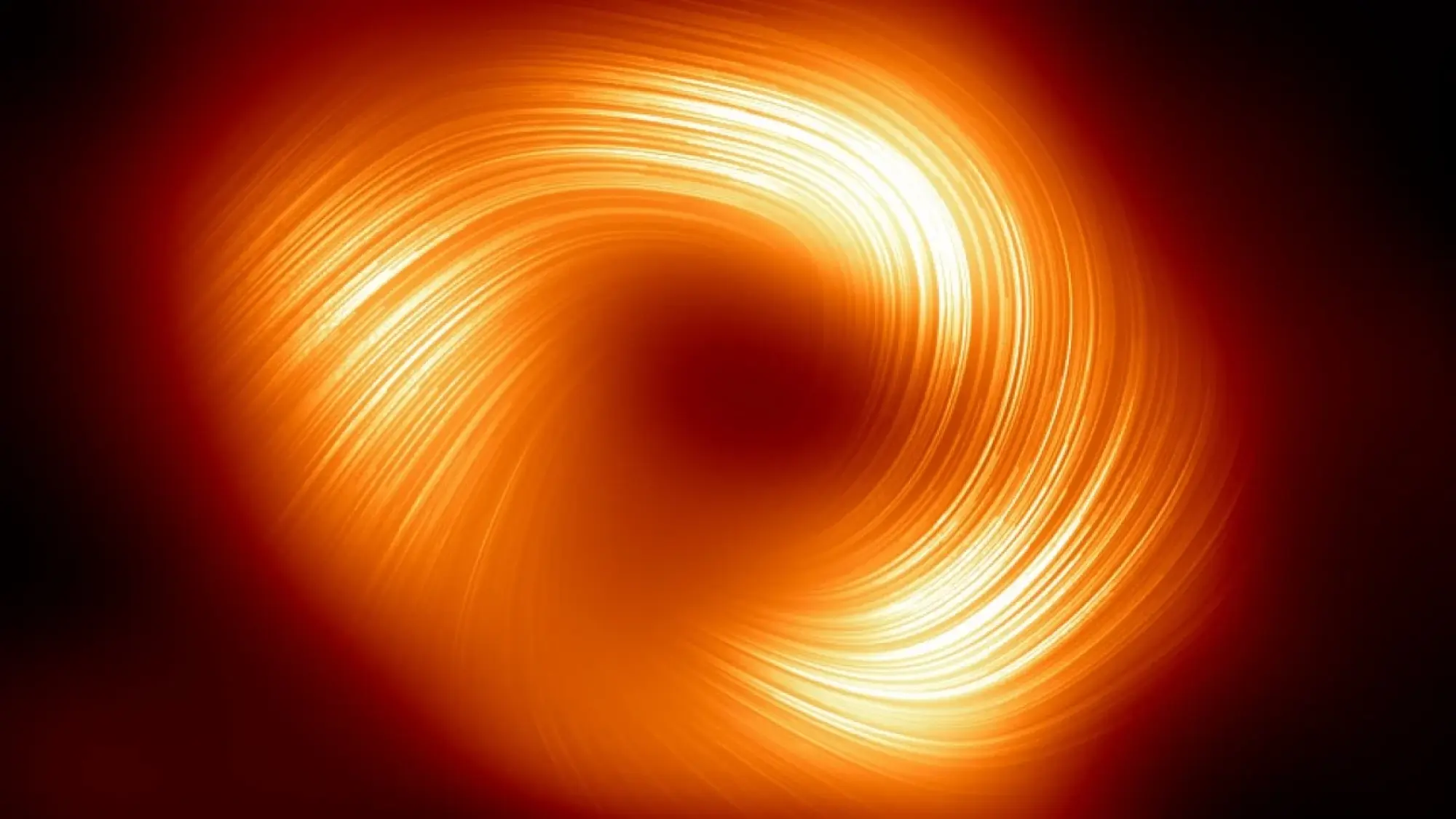Astronomers suspect the giant black hole at the heart of the Milky Way may have collided with another black hole in just the past 10 million years.
At the core of the galaxy, about 26,000 light-years away in space, is Sagittarius A*, a supermassive black hole about 4 million times more massive than the sun. The idea is that Sgr A* scarfed down another smaller black hole, potentially solving a longheld mystery about a strange group of stars near the galaxy’s center.
These so-called S-stars orbit in wild, tilted, and stretched-out paths, in stark contrast with other nearby stars that move in a neat, orderly rotation. No one knows how the S-stars got where they are or why their orbits are so chaotic, especially given they’re young and whatever caused their motion had to have happened fast.
A team of researchers used computer simulations to try to retrace the steps of previous cosmic events. The scientists found if a smaller black hole merged with Sgr A*, the event could have triggered a kickback similar to that of a firing gun. The recoil could have then scrambled the orbits of nearby stars without flinging the black hole far from the center. The researchers’ results appear in The Astrophysical Journal Letters.
Two black holes merged in outer space and created something colossal

An image of Sagittarius A*, a supermassive black hole at the Milky Way’s galactic center.
Credit: Event Horizon Telescope (EHT) collaboration
Black holes are some of the most inscrutable phenomena in outer space. About 50 years ago, they were little more than a theory — a kooky mathematical answer to a physics problem. Even astronomers at the top of their field weren’t entirely convinced they existed.
Mashable Light Speed
Today, not only are black holes accepted science, they’re getting their pictures taken by a collection of enormous, synced-up radio dishes on Earth. Humanity saw a clear view of Sgr A* for the first time in 2022.
Unlike a planet or star, black holes don’t have surfaces. Instead, they have a boundary called an “event horizon,” or a point of no return. If anything swoops too close, it will fall in, never to escape the hole’s gravitational clutch.
The most common kind, called a stellar black hole, is thought to be the result of an enormous star dying in a supernova explosion. The star’s material then collapses onto itself, condensing into a relatively tiny area. How supermassive black holes form is even more elusive. Astrophysicists believe these invisible giants lurk at the center of virtually all galaxies. NASA‘s Hubble Space Telescope observations have bolstered the theory that they begin in the dusty cores of starburst galaxies, where new stars are rapidly assembled, but scientists are still teasing that out.

Scientists propose that a massive black hole fell toward Sgr A*, taking with it gas and stars, causing the black holes to eventually merge. The merger remnant would get a recoil kick, which over a few million years could cause the strange tilted orbits of the S-star cluster.
Credit: Tatsuya Akiba et al. / doi:10.3847/2041-8213/addc5d diagram
The Milky Way is ancient — over 13 billion years old — and over that time, it has likely absorbed many smaller galaxies. Some of those galaxies may have contained their own black holes. If one of these smaller black holes spiraled into Sgr A*, it would have released a blast of gravitational waves, pushing Sgr A* slightly off-center. Over time, the gravity of this lopsided disk could have pulled some stars closer and tilted their orbits, turning them into the S-star cluster seen today.
To test this hypothesis, researchers used computer simulations that mimic how stars and black holes interact. In their model, a smaller black hole — about 200,000 times the mass of the sun — falls into Sgr A*. Fast-forward 2 million years, and the simulation produces a group of stars whose orbits look a lot like the S-stars.
Though the model isn’t perfect — the stars’ orbits were a bit less extreme than the real ones — future studies could tweak it. Researchers say the model not only offers a new way to study the history of the Milky Way’s central black hole but sheds light on how galaxies evolve.
